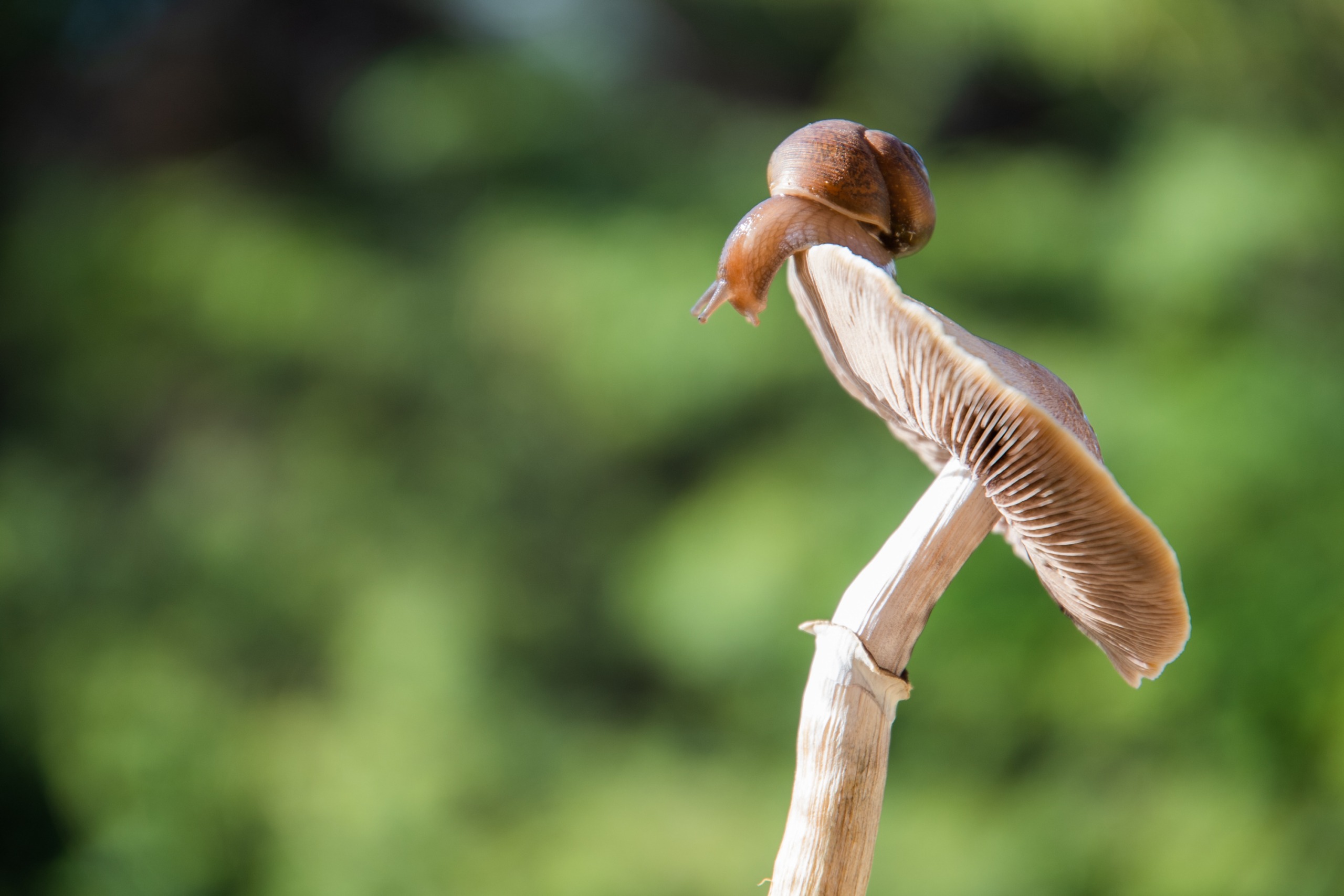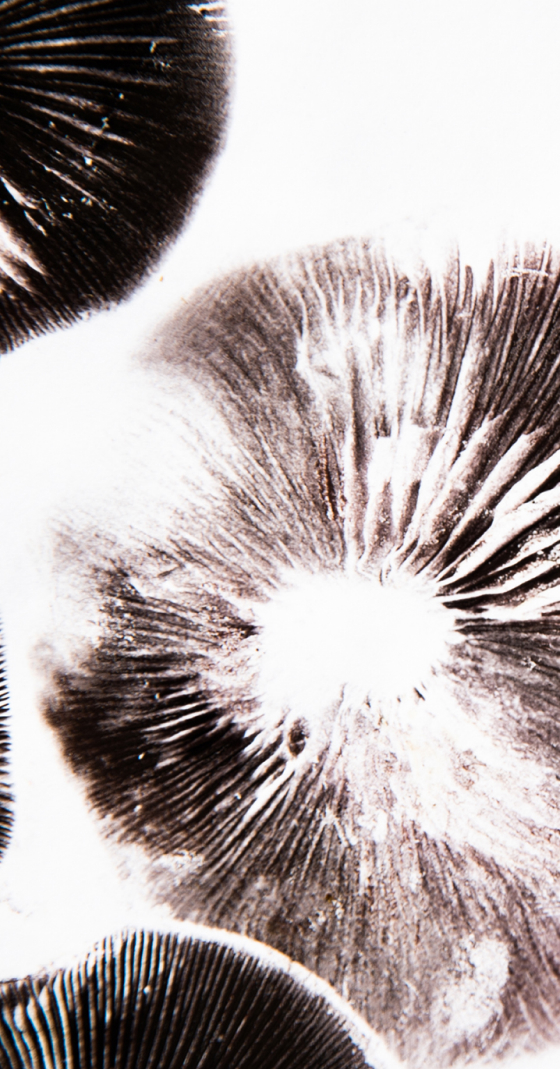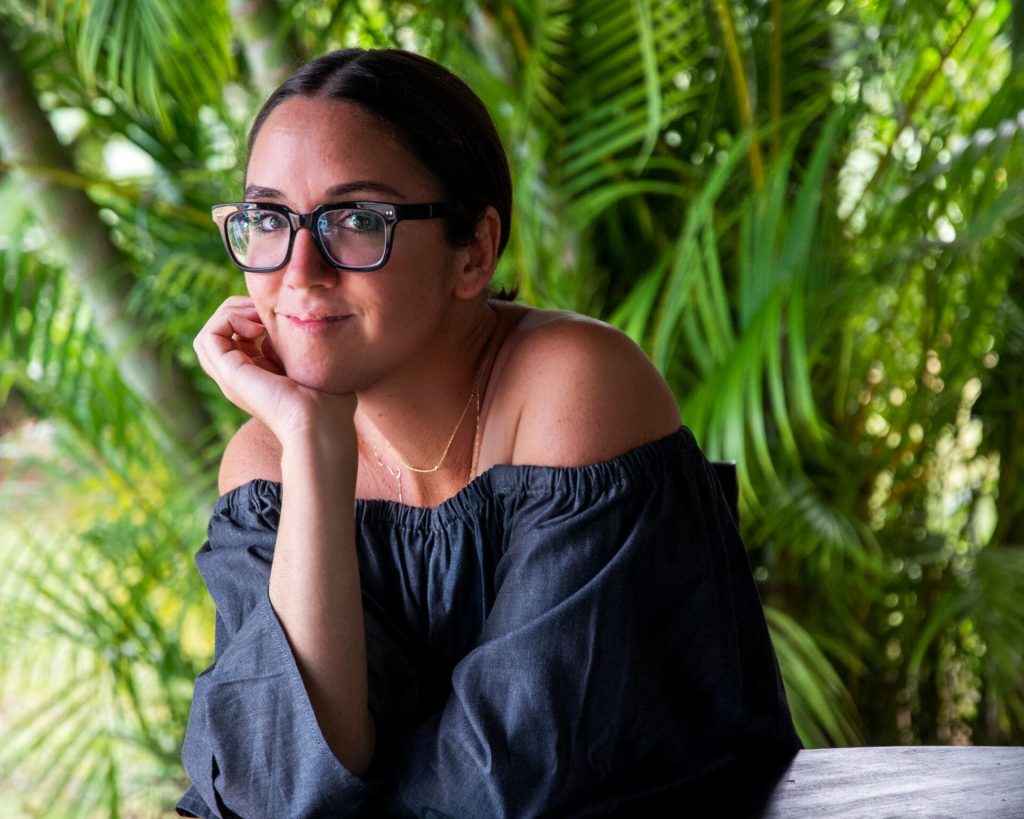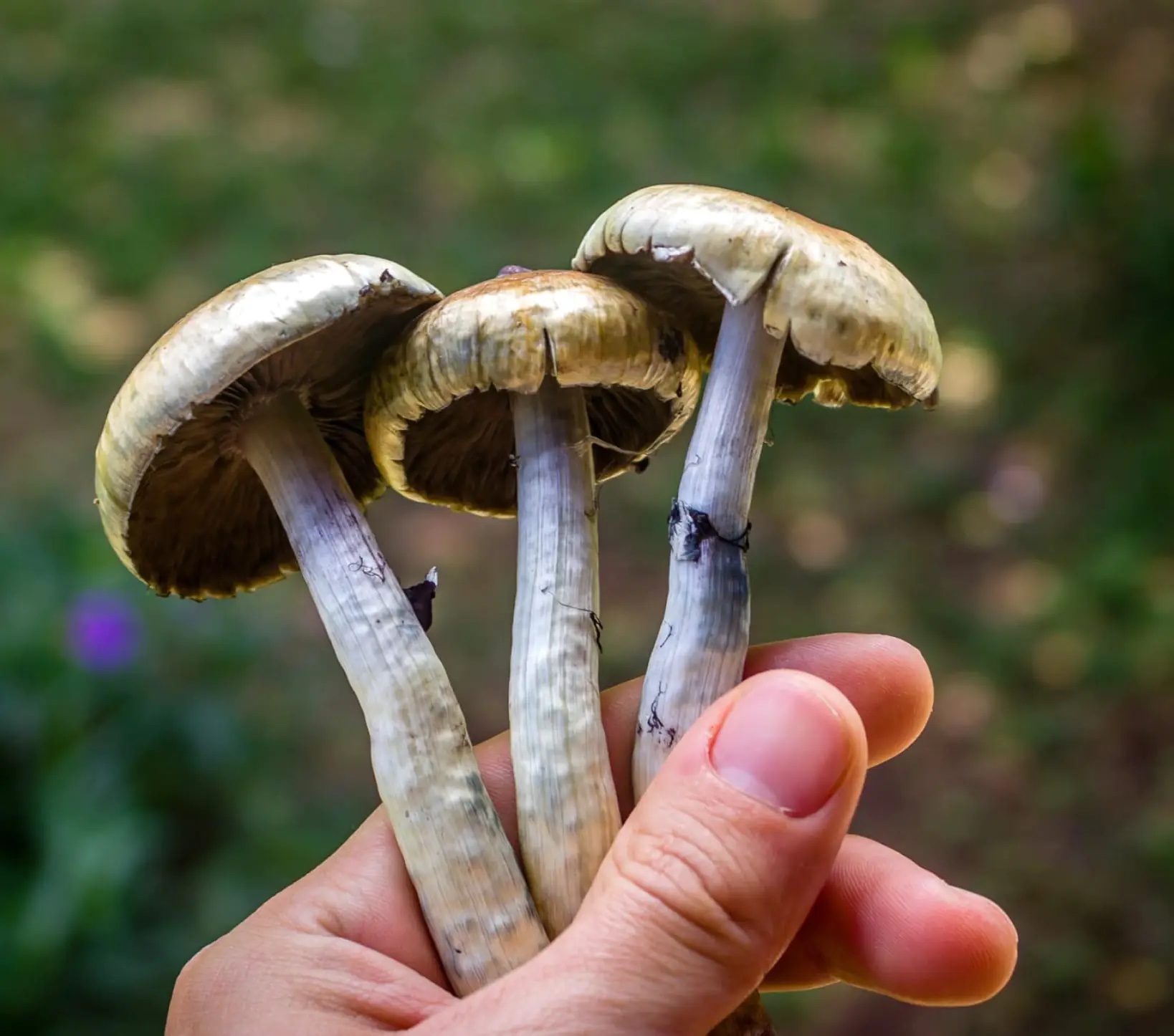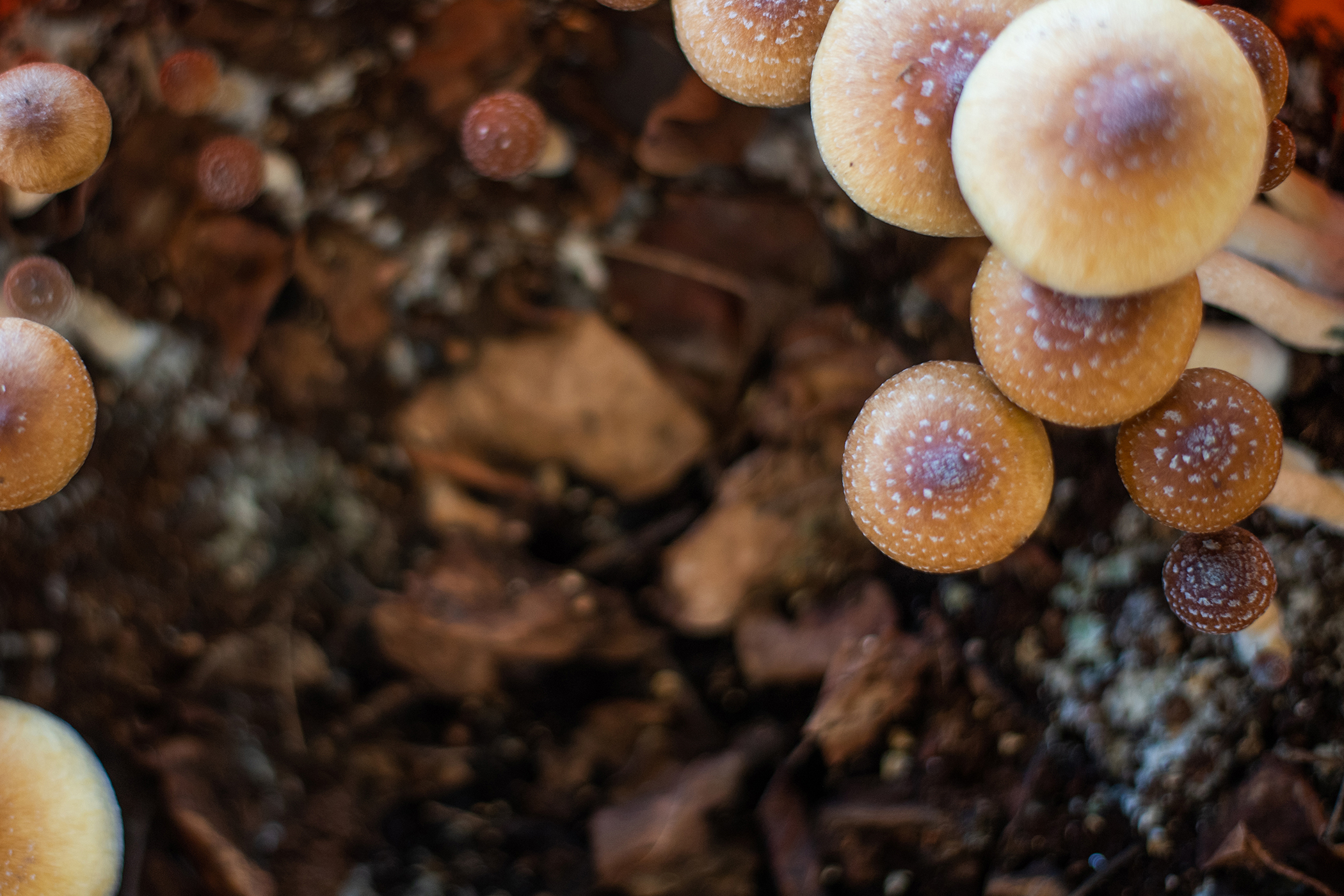
Everything You Need to Know About Psilocybin and Anxiety
The complete guide to understanding all there is to know about the therapeutic use of psilocybin for anxiety.
Published on: September 22, 2025
A Complete Overview of Psilocybin and Anxiety
If persistent fear and worry crowd your day, even when you’re completely safe, you’re not alone.
Anxiety levels are on the rise. It’s estimated that over 300 million people globally and 19% of the US population suffer from an anxiety disorder.
Anxiety is one of the most common mental health struggles in the Global North, profoundly impacting sufferers’ daily lives, psychological well-being, and physical health.
And while traditional treatments may help many people, not everyone finds lasting relief.
This gap is why researchers – and a growing number of patients – are paying close attention to psilocybin, the compound in magic mushrooms. Early clinical studies and real-world reports point to meaningful reductions in anxiety thanks to the neurological changes, psychological insights, and mystical experiences that occur during the psilocybin journey.
In this guide, you’ll learn:
- Types of anxiety: GAD, SAD, and End-of-Life Anxiety
- What psilocybin is and how it works in the brain
- What the research shows so far on anxiety and related conditions
- What the experience is like for anxious minds (before, during, after)
- Preparation, set & setting, and integration
- Vetting practitioners and finding the right center for you
- Real insights from guests on using psilocybin to work with anxiety
Different Types of Anxiety Disorders
Anxiety can show up across a range of mental health disorders, including panic disorders, OCD, and eating disorders. In this article, we’ll focus primarily on two of the most common types of anxiety disorders: generalized anxiety disorder (GAD) and social anxiety disorder (SAD).
Generalized Anxiety Disorder
GAD involves chronic, excessive worry about everyday events across multiple domains, such as health, finances, or work. Think your typical type of anxiety, where you spend a disproportionate amount of time stressed about things that haven’t happened yet, and likely never will.
Sufferers often experience physical symptoms like restlessness, muscle tension, sweating, and palpitations, and feel a sense of dread or irritability. GAD may also worsen other physical health conditions like digestive issues, headaches, and chronic pain.
There are several potential causes of GAD. Some studies have found that genetics play a role, as well as neurobiological factors, such as dysregulation in the hypothalamic–pituitary–adrenal (HPA) axis and heightened amygdala reactivity.
People who are less tolerant of uncertainty are more prone to develop GAD, in addition to those who are going through chronic stress (such as financial or relationship stress), and have experienced trauma earlier in life.
In fact, studies have found that trauma can inhibit the amygdala (the part of the brain that kicks us into survival mode) from telling the difference between current and past threats.
Social Anxiety Disorder
Social anxiety disorder (SAD) involves disproportionate anxiety about social situations and fear of scrutiny by others. It often shows up physically as blushing, trembling, sweating, or nausea during or in anticipation of social exposure.
Those who suffer from social anxiety often fear negative evaluation in social situations and may struggle with interpersonal functioning and building new relationships with others.
Research indicates that children who show signs of behavioral inhibition (BI), i.e., apprehension and discomfort around new places, people, and activities, are at a higher risk of developing anxiety disorders later in life.
This is especially the case for those who have high BI and over-protective or anxious parents or caregivers, and those who experienced trauma around social situations, such as bullying.
Hyperactivation in the amygdala and insula (which supports emotional processing, integrating bodily states, and nervous system regulation) is associated with SAD. Social anxiety is also more likely to show up in people who consistently think negatively of themselves and their capabilities.
End-of-Life Anxiety
While we’ll focus primarily on GAD and SAD in this article, it’s important to mention end-of-life anxiety, given the amount of research on how sufferers may find relief through psilocybin.
End-of-life anxiety refers to debilitating fears and worries about one’s own mortality and the dying process. The causes of this are clear – being confronted with the prospect of dying, while also dealing with physical decline and symptom burden, can trigger intense feelings of distress.
People who are going through end-of-life anxiety may experience excessive rumination, a sense of helplessness, or regrets about their life choices. They may also feel worried about being a burden on others.
What is Psilocybin and How Does it Work in the Brain?
In recent years, psilocybin has gone from a stigmatized “drug” that’s taken by hippies to a scientifically recognized breakthrough mental health treatment.
But its therapeutic use goes back much further than the clinical trials of the last few decades. Psilocybin mushrooms have been used ceremonially in indigenous communities across the world for centuries. For example, Mexican groups like the Mazatecs and Zapotecs use one of the psilocybin mushrooms in rituals for healing and spiritual divination called Veladas.
So, how does this sacred mushroom work in our brains?
Many of the therapeutic effects of psilocybin come from its activation of serotonin 5-HT2A receptors, which are found in the brain regions responsible for emotional processing.
When ingested, psilocybin is rapidly converted into its active metabolite psilocin, which, when bound to 5-HT2A receptors, initiates neurobiological changes that underlie both the acute psychedelic experience and long-term therapeutic benefits.
Psilocybin is known to promote neuroplasticity – the brain’s capacity to form new neural connections. This makes it easier for individuals to create new habits and thought patterns in the days and weeks following the psilocybin experience, acting as a neurological “fresh snowfall” on the mind.
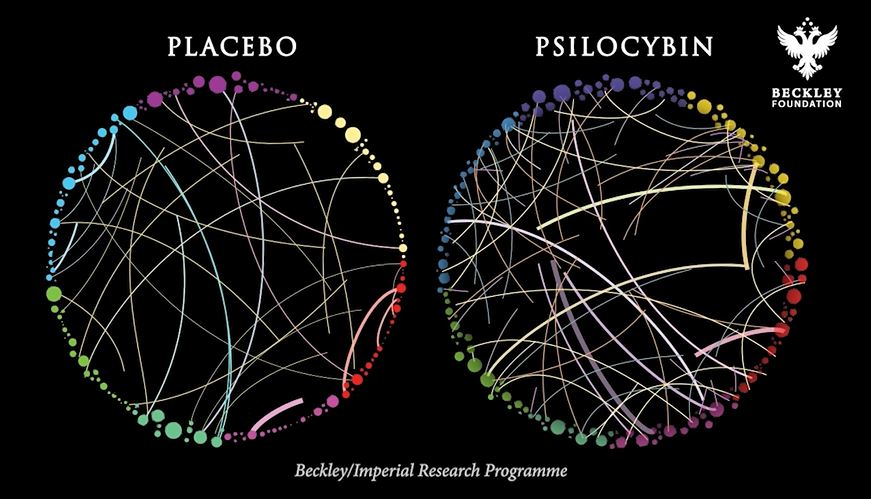
Psilocybin also dramatically alters brain network connectivity, particularly within the default mode network (DMN). The DMN refers to the brain regions associated with self-referential thinking and rumination – i.e., overthinking about things that have happened in the past or are yet to happen.
Studies show that psilocybin essentially loosens the tight coupling of regions in the DMN during the acute experience, helping to tune down rumination and self-talk. In the days and weeks following the experience, this DMN “reset” is thought to be responsible for therapeutic effects in patients with depression and anxiety.
Psilocybin For Anxiety: What Does the Research Say?
While the research may not be as extensive as psilocybin for depression, published and ongoing studies suggest that it has the potential to treat various anxiety disorders.
The most direct evidence for psilocybin as a treatment for GAD comes from Incannex Healthcare’s midstage clinical trial involving 73 participants with generalized anxiety disorder. In this randomized, placebo-controlled study:
- Anxiety scores decreased 12.8 points in the psilocybin group versus 3.6 points in the placebo group at 11 weeks
- 44% of psilocybin-treated patients experienced anxiety score reductions of more than 50% – over four times higher than placebo
- 27% achieved full disease remission, more than five times higher than controls
- Treatment was well-tolerated with no serious adverse events
This review of clinical trials showed that psilocybin administration resulted in a sustained reduction in symptoms of depression and anxiety. Patients also saw an enhanced sense of well-being, life satisfaction, and positive mood up to six months after the psilocybin treatment.
Another study demonstrated that psychedelics, including psilocybin, helped reduce anxiety and increase self-perception and social function in patients with GAD, SAD, or anxiety related to another medical condition.
This meta-analysis of four studies also showed significant reductions in anxiety and depression symptoms post-psilocybin treatment and at the six-month follow-up. Meanwhile, this study found that when combined with mindfulness meditation, psilocybin therapy disrupts the neural mechanisms that underlie social anxiety disorder, helping sufferers regulate self-referential processing and experience unbiased perception of social situations.
Data gathered from our retreat guests at MycoMeditations indicates that psilocybin-assisted therapy can provide lasting relief for people suffering from generalized anxiety disorder and/or social anxiety.
The data showed clinically significant, durable improvements in both GAD and SAD symptoms one year after the retreat, and highlighted the utility of group psilocybin retreats for people with anxiety disorders, when supported by individual therapy.
Overlap of Study Results
Many of the studies on depression also note an improvement in anxiety. This means that the researchers weren’t necessarily looking at the effect of psilocybin on anxiety, but they noticed an improvement in anxiety symptoms.
For example, in a study of people with terminal cancer, psilocybin improved their anxiety as well as depression and overall mood. Another study looking at the effects of psilocybin on people with depression saw an improvement in both anxiety and depression.
There’s also some early research on the effects of psilocybin on obsessive-compulsive disorder (OCD). Even though the study didn’t look at psilocybin’s effects on anxiety specifically, anxiety is a major component of OCD. And in this study, psilocybin showed a reduction in anxiety symptoms of OCD.
Research on End-of-Life Anxiety and Psilocybin
While cancer and terminal-illness related studies are not the primary focus of this article, they provide crucial evidence of psilocybin’s potential to treat anxiety. Multiple large randomized controlled trials in cancer patients with anxiety disorders have demonstrated substantial therapeutic benefits:
This landmark Johns Hopkins study examined 51 cancer patients with life-threatening diagnoses and anxiety/mood symptoms. Results showed:
- HAM-A anxiety scores decreased significantly (d=3.40) at 6-month follow-up
- 83% overall response rate for anxiety at 6 months
- 57% achieved anxiety symptom remission
- Effects correlated strongly with mystical experience intensity
Another study conducted at NYU Langone found that psilocybin-assisted psychotherapy significantly reduced anxiety in cancer patients, with improvements lasting up to six months. The study concluded that psilocybin therapy benefits may extend far beyond previously understood applications.
The Psilocybin Experience for People With Anxiety
If you’re somebody struggling with anxiety, you may be wondering if a psilocybin experience would be too much for you to handle, or even make your anxiety worse.
While feelings of fear and anxiety can come up during a psilocybin session – this is normal – and several factors contribute toward you feeling safe, supported, and grounded during the experience.
If you have been taken through a thorough screening and preparation process and have the right “set and setting” going into the session, along with ample integration support available afterwards, the likelihood of you having an experience that causes any psychological harm is extremely low.
Before: Screening, Preparation, and Set & Setting
The first step of having a safe psilocybin experience is screening. This is important because psilocybin is not a good fit for everyone – for example, individuals with psychotic disorders, bipolar disorder, or uncontrolled cardiovascular disease should not take psilocybin.
Certain medications are absolutely contraindicated with psilocybin, such as lithium, and other drugs, such as SSRIs, will likely blunt the psychedelic experience significantly. If you are taking SSRIs and are planning to taper off before a psilocybin session, make sure to do so under the supervision of a licensed medical or mental health professional.
Other aspects of screening include assessing psychological stability, psychological background, physical health, self-awareness, coping skills, and understanding any other therapeutic modalities that you may have explored and their results. If you are struggling with an anxiety disorder, it’s helpful to have explored some kind of talk therapy or other healing practices before embarking on a psychedelic experience. Having done previous inner work will help you navigate the psychological material that comes up during your psilocybin session.
Once you pass the screening, you will be taken through a process of preparing psychologically for the experience. This refers to the mindset in set and setting.
A key aspect of preparation involves clarifying your intentions – what do you want to gain from the experience? What specifically do you want to work on changing? How do you plan to approach the experience?
Try to have between one and three clear, specific intentions you want to work on. For example, “help me accept myself fully,” or “remain open to all that is shown to me.” The ideal intention will apply to any type of experience that may arise, and with psilocybin, this range can be vast.
Practices such as somatic therapies, yoga, meditation, breathwork, and spending time in nature will all help you cultivate the tools to traverse your psilocybin session. Developing your mind-body connection will help you feel more grounded and regulated, should anxiety arise during your session.
The setting in set and setting refers to the environment around you. This incorporates the physical space you’re in and the people around you – you want to prioritize feeling safe and comfortable. Ideally, you’ll also have access to nature. Setting also includes the sounds or music you can hear during your journey.
Especially when taking part in group psilocybin sessions, you may feel a sense of bonding or camaraderie with the other people also taking part. And of course, having trained facilitators there to take care of you is a crucial component of having a safe experience.
During: What the Psilocybin Experience Can Feel Like
So, you’ve selected a trustworthy practitioner, gone through a screening process, and followed the necessary preparation guidelines. It’s time for your psilocybin journey.
Once you ingest the psilocybin, the onset of effects can take anywhere from 30 to 60 minutes. Some people use a method called lemon-tek to speed up this process. During this time, it’s normal to have anticipatory or anxious thoughts enter your mind – “am I really ready for this?” or “I wonder if it’s kicking in yet?”
Try to keep your focus on your breath and your intentions and not over-anticipate your experience at this point. Remember that this experience is safe, and do your best to let go as if you were drifting to sleep. By staying centered within your body and managing the tendency to overthink, you’ll be better able to surrender to the experience once the psilocybin takes effect.
Between hours 1.5-4.5 after taking the dose, you’ll be at the peak of the experience. The “come-up” can be accompanied by anxious thoughts and feelings of fear. This is completely normal. Remember to remind yourself that you are safe, you are taken care of, and to trust in letting go.
It’s helpful to have some “mantras” or anchors on hand that can help you accept what’s happening in the moment. Researchers at Johns Hopkins encourage study participants to repeat the anchor:
Trust. Let go. Be Open.
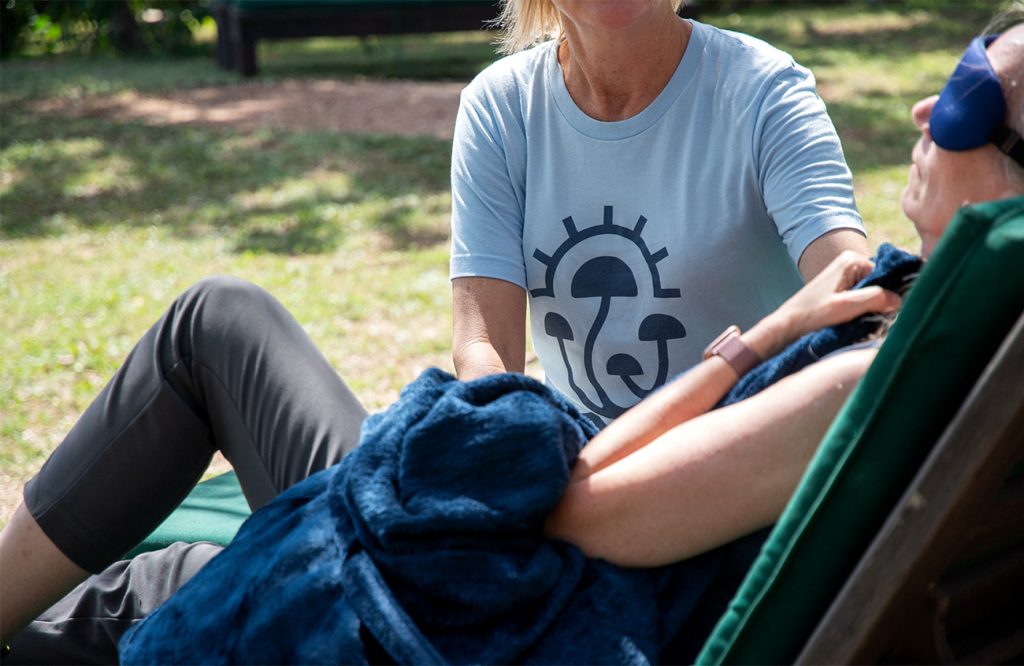
Other helpful anchors may include:
- I am safe
- I am open
- I am worthy of healing
- I welcome this experience
Repeating these messages to yourself in your mind can help you calm the fears and welcome whatever psilocybin is presenting to you during the session.
During this time, challenging psychological content may arise. You may feel that you’re losing control, or that the experience is too much, too fast. Difficult emotions, such as fear, grief, or sadness, may come up.
You may be taken back to specific memories or be confronted with uncomfortable truths about yourself and your life. You may have emotional breakthroughs and realizations. It’s also possible that you experience intense joy or ecstasy – psilocybin can bring on the full spectrum of emotions, and there’s no real way of knowing what will emerge during the session.
You may feel physical discomfort and sensations, including nausea or headache, or experience physical and emotional release, such as through shaking, crying, or laughing.
It’s important to remember that all of this is normal and part of the process of healing from anxiety. Healing isn’t always comfortable. Additionally, having a challenging experience doesn’t mean you had a bad trip. Even in therapeutic settings, challenging journeys are common and are associated with positive changes after the experience.
Here are some helpful tools to help you calm anxieties and ground during your psilocybin session:
- Invite gentle oscillation between difficult material and neutral anchors such as the breath, contact points, or sounds. For example, you might touch the difficult feeling for a few breaths, and then rest back in the breath or feeling a part of your body, and go back again. This reduces overwhelm without avoidance.
- Engage short cues that make room for sensations. For example, “Allow this wave,” or “Name it, breathe it, let it be.” ACT-informed models help enhance experiential acceptance and values-guided action during the integration process.
- Use slow, longer exhale breathing, soften your jaw and shoulders, and feel three points of contact (such as your heels, seat, and back). Find a comfortable posture and get whichever comforts help you relax, such as being covered by a blanket. Simple, body-based cues can down-regulate arousal and signal to the nervous system that you’re safe.
- Music is a central element to your journey. If it feels too intense or overstimulating, you can ask your guides to lower the volume, change the track, or pause for a brief silence.
- Trained facilitators provide reassurance and attend to your safety and comfort, without steering content. If you need support, ask for it from your facilitator – they are there to help you navigate the psilocybin experience.
Lastly, while making yourself comfortable to navigate the experience best is important, it’s equally important to recognize when you are seeking comforts as a crutch to avoid discomfort. Taking psilocybin for anxiety may naturally evoke discomfort, and you want to be careful that you don’t avoid the work that lies ahead of you by trying to escape the experience.
Pay attention to shifting a lot in your position, repeatedly thinking the music isn’t quite right, or thinking that everyone around you is too noisy – these are all examples of common defense mechanisms to avoid feeling difficult emotions.
The most therapeutic psilocybin experiences for anxiety will bridge this gap between feeling prepared and comfortable while allowing yourself to confront the difficulties that arise to heal. If this is challenging, lean on the support of your facilitators rather than trying to escape discomfort.
Accessing Your Inner Healing Intelligence
A helpful concept for psilocybin work – and one that is used frequently in clinical psychedelic-assisted therapy settings – is that of an inner healing intelligence.
This is the notion that we have a natural, innate ability to heal if we allow ourselves to trust and get out of our own way. Connecting with your inner healing intelligence during a psilocybin session can help you feel more empowered and develop a deeper sense of self-trust. However, it’s important to fully surrender to the experience for this process to unfold to the fullest extent. Using the tools we mentioned above and leaning on the support of those who are guiding you will help you let go and tap into this inner healing intelligence. Once your mind stops fearing, analyzing, or doubting the experience, psilocybin connects with this process to stimulate radical healing of trauma, which in turn reduces the symptoms of anxiety.
Therapists and facilitators who adopt this approach are non-directive and seek to help you connect with your own healing capacities. These psychedelic practitioners provide an environment where you feel safe enough to let go and offer guidance to help you best engage with the psilocybin session.
The Mystical Experience and Emotional Breakthrough: Why They Matter For Anxiety
During high-dose psilocybin experiences, many people report having a mystical experience. In clinical studies, this is defined as feeling a sense of unity or interconnectedness, sacredness, “felt truth”, transcendence of time/space, and deep positive mood.
According the Mystical Experience Questionnaire (MEQ30), a “complete mystical experience” is defined as a score of more than 60% of the maximum possible score for each of the MEQ30’s four subscales: mystical, positive mood, transcendence of time and space, and ineffability.
While no two are the same, they are a fairly common feature of high-dose psilocybin journeys. They are correlated with reductions in anxiety and depression post-experience, and related to persisting positive effects. The occurrence of a mystical experience with psilocybin can also greatly assist those with end-of-life distress.
Many study participants also report a wave of emotional catharsis during psilocybin journeys. As mentioned above, this can involve crying, shaking, and a felt sense of “letting go” of pent-up emotions or traumas. Emotional breakthroughs during psilocybin sessions help to increase psychological flexibility, which is known to lead to reduced depressive and anxious symptoms.
Following mystical experiences and emotional breakthroughs, people may feel more able to let go of rigid narratives (e.g., “I can’t cope” or “The world isn’t safe”), creating space for new, healthier beliefs about self and the world.
People often emerge more willing to contact difficult feelings and pursue values-based actions. This shift can help reduce anxiety after psilocybin, giving people a sense of, “I faced my inner demons, so now I can face anything.”
Having said that, a mystical-type experience or catharsis is not necessary to receive the benefits of psilocybin therapy. Many people experience huge improvements without them – the most decisive factors remain proper preparation, therapeutic support, and integration.
Integration: Weaving Your Experience Into Your Daily Life
Once your psilocybin journey has finished and you land back into your life, you enter into the integration period. This is when you integrate everything you experienced during the session into your day-to-day life.
Immediately following the journey, it’s important to give yourself time and space to ground again and start processing your experience. This looks like lots of rest, sleep, journaling, and nourishing meals and movement. It’s also common for information to continue coming through in this initial stage, so stay open to further insight and make space for this process to unfold.
During your session, you may have received insights on changes you wish to make – habits you’d like to leave behind, or new ones you want to implement. Part of integration is making these positive changes, especially during the window of neuroplasticity in the days and weeks following the session. When you’re in this window, integrating new habits and thought patterns can feel smoother, and they’re more likely to stick for the long term.
Integration also involves adopting new perspectives and ways of being in the world. This process can go deeper than a to-do list of new healthy practices – and often requires continued deep inner work to fully embody a new identity or state of being.
Journaling and nervous system work can be crucial here, as well as having the support of trained professionals. You might want to seek out integration therapy or coaching, or integration circles, where you can safely explore and unpack your experience in the presence of others on a similar path. Legitimate psychedelic practitioners and retreat centers will have some level of integration support built into their programs.
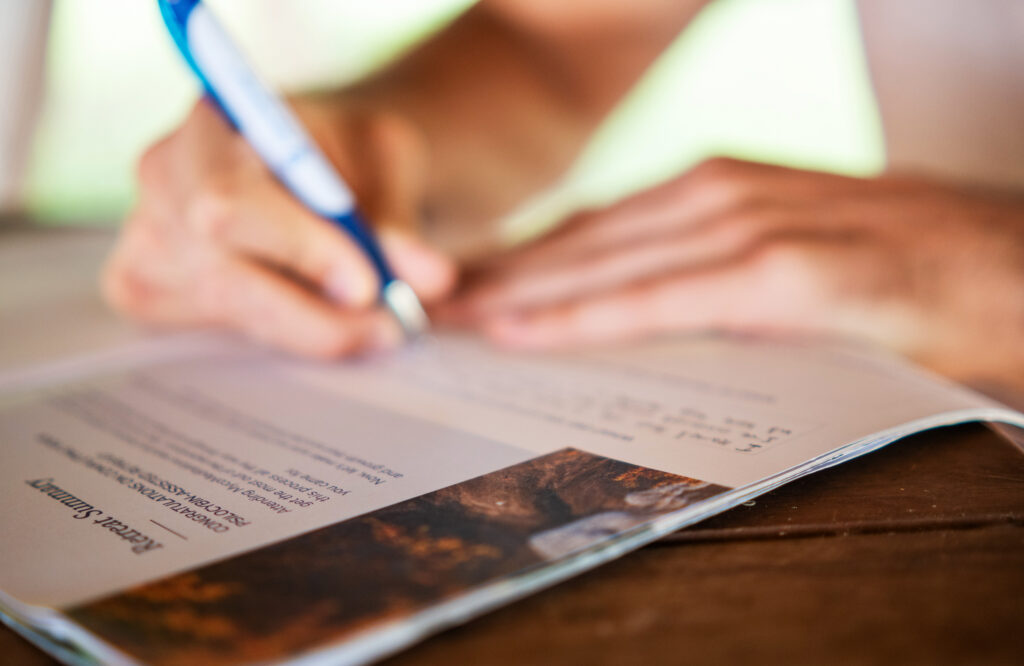
It’s not uncommon to experience challenges during the integration period. Psilocybin can bring up difficult psychological material, including past traumas and emotions that have been suppressed. You may even feel more mentally unstable or anxious following a psilocybin journey. This is normal and often part of the healing process – try to see it as an invitation to explore and process the emotional content that’s coming up.
Sometimes things have to get worse before they get better, but it’s vital you find support if this is the case for you. Remember the axiom “You have to feel it to heal it” – by being able to process these emotions in a safely-held container, you can begin to release yourself from their grip.
Specific therapies that can work well for those using psilocybin for anxiety include Acceptance & Commitment Therapy, Mindfulness-based Therapies, Cognitive Behavioral Therapy, and Internal Family Systems.
Choosing a Practitioner or Center for Psilocybin Work
If you are seeking out a guided psilocybin experience, we encourage you to thoroughly vet any practitioner or retreat center you’re considering working with.
Providing psychedelic experiences is a responsibility that cannot be overstated and should only be done by individuals who have undergone the necessary education and training. This is especially the case when holding space for people who have deeper mental health struggles and may need more specialized attention.
Make sure to do your due diligence by asking the practitioners or retreat centers:
- What is your background in training for psychedelic facilitation or psychotherapy?
- Do you have medical or psychotherapeutic professionals on your team?
- What experience do you have treating individuals with anxiety?
- How do you screen participants before accepting them?
- What preparation support do you provide?
- Who will be present during the session, and what is their role?
- What environment do you provide during the session?
- What is your approach if I become anxious or distressed during the session?
- What kind of integration support is included afterward?
- Is psilocybin legal in your location and under what framework?
You should also consider:
- What is the pricing of the retreat or journey, and is it within my budget?
- Where is the center located, and can I make arrangements to travel if it’s further away?
- What kind of setting do I want to be in – is it important to be in nature, or will a therapist’s office suffice?
- If the journey is being offered as an underground service, am I comfortable with that, and what risks does that imply?
Thoughtfully weighing up your options, using discernment, and tapping into your intuition will help you choose a practitioner or center where you feel safe and that caters to your unique needs.
For more insight into how psilocybin retreats at MycoMeditations could support you in overcoming anxiety, check out our testimonials page.
Psilocybin-Assisted Retreats: A Path Towards Anxiety Relief
Living with anxiety can feel overwhelming, but a growing body of research and anecdotal evidence indicate that psilocybin shows real promise in helping people move beyond cycles of fear and rumination.
However, psilocybin isn’t a magic pill or a quick fix. The most meaningful transformations come through careful preparation, guided support, and intentional integration afterward. For many, retreats provide the safe, structured environment needed to explore these experiences.
Psychedelic retreats like MycoMeditations provide access for people seeking gold standard therapeutic care utilizing psilocybin therapy, offering a framework that supports lasting improvements in anxiety that has been proven by data.
If you live with anxiety, know that you’re not alone. We invite you to explore how an expertly guided psilocybin retreat may offer you the hope and healing you’ve been seeking
